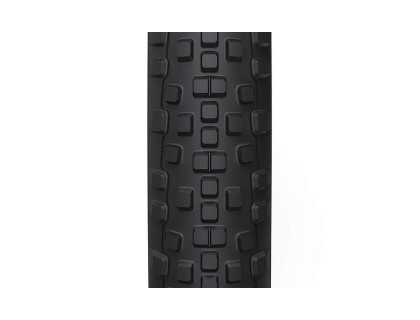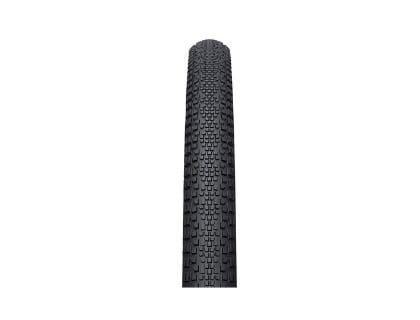As you can imagine, there’s a whole science behind choosing the right tires for your bike. We’re often surprised about how many things you have to learn about an object that seems so simple. It doesn’t matter if you’re a professional cyclist or just like to ride your bike for recreational purposes. In time, you will get to learn tons of bike-related stuff.
Today, we’re going to go over the best gravel bike tires currently available on the market. But first, we have to review some of the basic information related to tire dimensions, different tread patterns, and some of the most common bike tire characteristics.
Table Of Contents
Top 6 Best Bike Tires for Gravel Comparisons
|
Brand |
Details |
|---|---|
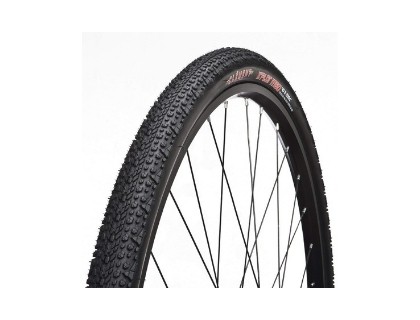
Clement Cycling X’PLOR MSO Clincher 60 TPI Tire |
|
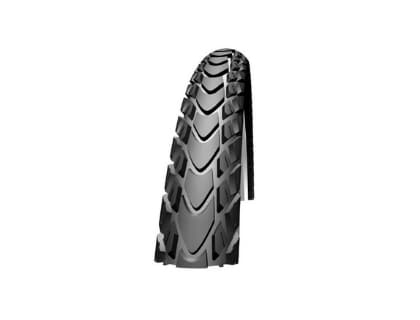
Schwalbe Marathon Mondial HS 428 RaceGuard City/Touring Bicycle Tire |
|
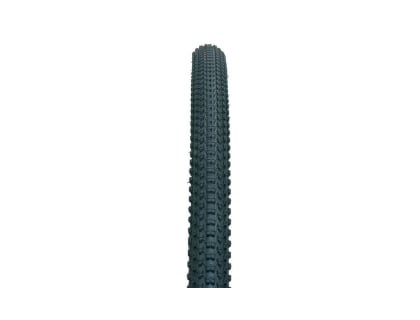
Kenda Small Block 8 XC Mountain Bike Tire |
|
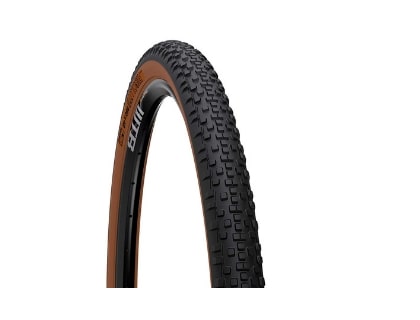
WTB Resolute TCS Tire |
|
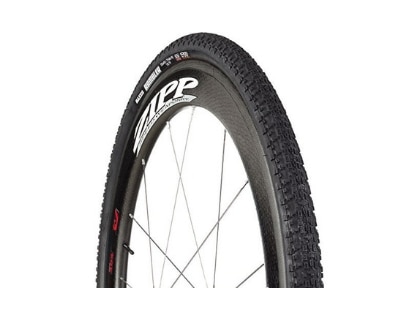
Maxxis Rambler EXO/TR Tire |
|
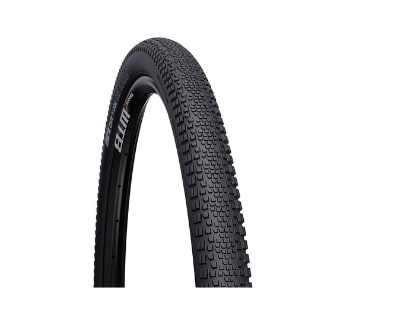
WTB Riddler 700 x 45c Bike Tire |
|
Bike Tire Dimensions
First thing’s first, if a gravel bike tire doesn’t come in the right size, it will be useless. Like all bike accessories, tires need to match the frame if you want them to work. There are two things to pay attention to: the diameter and the width of the tire. Intuitively, the diameter of a tire is given by the distance between the two most outer ends. The road tire width is the distance between the outside treads. When it comes to road cycling, measurements are noted in the metric system. MTB bikes, on the other hand, use the imperial system.
As you can imagine, tires of different sizes also have different functions. For example, a gravel bike tire with a larger diameter sacrifices stability to provide you with more speed. But when it comes to width, things are exactly the opposite: a thinner road tire will roll faster but won’t perform well on loose surfaces. Fatter tires are even faster but also more stable. Consequently, you need to determine if you’re more interested in stability or speed before making a tire-related choice.
Depending on the riding style that you prefer, choosing the suitable tire width is a matter that requires reflection. A narrower tire design is more suitable for cyclists who ride on smooth and hard surfaces, as this width provides more speed. On the other hand, people who ride on tricky terrain and face bumps, or uneven gravel road riding, will need a wider tire. It’s also easier to deflate a wider tire if you need more traction. Consequently, they may not perform that well on paved roads.
Mountain Bike Tires
Just as mountain bikes are made for rough terrain, so are their tires. They are characterized by a knobby thread that ensures proper road grip. Their diameter generally varies between 26 to 29 inches. On the other hand, the width is very dependent on the type of bike you own and how you like to ride. For cross-country bikes, you will need tires with a width between 1.8 and 2.2 inches.
Trail and mountain bikes require tires measuring between 2.25 and 2.4 inches. Downhill bikes are constructed to withstand more impact, so they will feature tires that measure 2.5 inches in width. Another thing about mountain bikes is that they can have different front and back tires. The difference is in the tread design, to provide the proper traction depending on the wheel you rely on.
Road Bike Tires
Things are a bit different with road bike tires. The standard diameter is 700c, and they generally have a width range of 18 to 23 mm. If the bikes are used in conditions where extra grip is required, they can be as wide as 28 mm. In general, road bike tires don’t have treads, which means they have better cornering grip. Also, since they are slim and thin, it’s easier for them to get punctured.
Features & Tread Patterns
MTB and road bike tires have very different tread characteristics. If you’re interested in bike tires for riding on gravel, mountain bike tires should be your main focus. Because they should be able to face rougher terrain, MTB tires must have treads. Of course, the pattern of these treads is directly correlated to your riding habits. For cyclists who often find themselves on a mix of trails and roads, a tire with side knobs should suffice.
For wet conditions, on the other hand, it’s better to opt for treads that are widely spaced to prevent mud accumulation on the tire’s surface. Tire hardness is also important. If you decide to opt for a softer tire, it should provide good grip on slippery rocks, but it will wear off faster. Harder tires will last longer but aren’t as good on slippery surfaces.
As we mentioned before, you can opt for a mix of back and front tires, with different types of treads on each. Depending on the road’s surface, you can add a smoother tire on the back for good speed, while opting for a knobby tire on the front for better grip. No matter the tread pattern, it’s important to buy two tires with the same width and diameter to provide stability when riding. Different sizes will cause imbalance and difficulty using the bicycle pedals.
Let’s go over some of the features that characterize bike tires and make them different from one another:
- Rubber softness is what determines the ratio between performance and durability. Soft rubber tires aren’t very durable, but they do provide you with a better grip. On the other hand, hard rubber tires will last you longer, but they aren’t so keen on adapting to every surface.
- TPI is an acronym for threads per inch, which is a measure that rates the carcass holding the tire together. A high TPI means that the tire is less durable but faster, while a lower TPI tire is more durable and heavier.
- Tubeless tires (obviously) lack tubes. This means that cyclists can ride with lower tire pressure. The main disadvantage is the mounting system, as they will need special tubeless-ready rims. Alternatively, you can invest in a conversion kit.
- Foldable tires are known for having an aramid-fiber bead instead of a wire one, which means they are better suited for those who like bike touring. Sadly, they are also more expensive compared to other types of tires.
- Studded tires are great for colder seasons. They feature studs that are made with aluminum or steel treats to make sure that the tire won’t be slippery on winter roads.
Top 6 Bike Tires for Gravel Reviews
Clement Cycling X’PLOR MSO Clincher 60 TPI Tire
- Dimensions: 10.5 x 4.8 x 3.8 inches
- Weight: 1.1 pounds
- Size: 700 cm x 40 mm
The Clement cycling tire is great for cyclists that want stability on tricky terrain, such as gravel roads. Due to its high tread knob density, the tire should be able to move across pavement with no difficulties whatsoever. However, the aggressive outer lugs suggest that it could be used in several conditions. Should your bike have available tire clearance, the 40 mm MSO will prove very useful. This means that whenever you ride across gravel, the extra volume should be able to push the tire towards a smoother ride, as narrow tires tend to sink into loose scree.
Since they are good for mixed conditions, they also perform well on the road, but you might want to inflate them more to prevent resistance. For riding on trails, about 60 PSI should provide enough power.
Pros
- Perform very well on gravel, trail, but also on-road use.
- They provide good grip on loose terrain.
- Soft rubber compound has shock-absorbing properties.
Cons
- PSI needs to be adjusted when switching from trail to road (or vice-versa).
Schwalbe Marathon Mondial HS 428 RaceGuard City/Touring Bicycle Tire
- Dimensions: 27.2 x 27.2 x 1 inches
- Weight: 1.27 pounds
- Size: 700 x 35 cm
The Schwalbe Marathon Mondial HS 428 is a definite master at handling combinations of long-distance touring, trekking, and gravel cycling. The tire’s design should be able to help it survive on long unpaved roads, without having to sacrifice too much speed. The central tread is quite unique and works towards keeping rolling distance down. In addition, the side blocks will perform well on muddy or loose terrain.
The tire is also puncture-resistant and extremely durable due to the Snakeskin sidewall protection features double defense while providing performance. Since the manufacturer has invested quite a lot in creating a durable product, this will add a few extra ounces to the weight, but heavy tires aren’t really a problem when you’re trekking. It’s better to have to deal with the little extra weight than to have to repeatedly stop to fix a punctured tire.
Pros
- Extremely puncture-resistant.
- Excellent grip for riding on a gravel or dirt road.
- Durable construction.
Cons
- Heavy tires.
- Not that suitable for smooth wet roads.
Kenda Small Block 8 XC Mountain Bike Tire
- Dimensions: 10 x 7 x 4 inches
- Weight: 4 ounces
- Size: 700 x 35 mm
Just as the name suggests, the tires feature 8 blocks that are placed on the tread width, to make sure that it can perform well in most conditions. The tire provides a useful combination of tread knobs and beefy grip to ensure stability on dirty paths and to properly drive the cyclist forward when facing hardpack conditions. If you’re looking for tires that can help you get across gravel and tricky terrain, but also ones that are suitable for a road commute, the Kenda should be able to cover them both.
The tire is available in a wide range of sizes, being able to cover mountain biking and touring needs. The 35’s are excellent when it comes to dirt roads, without sacrificing too much riding speed. Thanks to the small knobs, you have full control over the bike. They are resistant and capable of facing gravel roads.
Pros
- Very light considering its multiple applications.
- Generous number of knobs, for better ground contact.
- Suitable for difficult terrain, as well as smooth roads.
- Low rolling resistance.
Cons
- Doesn’t perform very well on sand.
WTB Resolute TCS Tire
- Dimensions: 10.5 x 6 x 4.5 inches
- Weight: 15.2 ounces
- Size: 700 x 42 mm
WTB makes, without a doubt, some of the best tires for gravel and all-road purposes. At the base of this WTB model, one can find the Byway and Horizon predecessors, but with upgraded and more aggressive treads. The tread pattern comprises a series of small and square knobs that have just the right amount of spacing to provide good rolling. In addition, the side knobs are sturdy to make sure that you have a good grip on your bike when you’re riding on rocky and loose terrain.
Please take note that the Resolute is a pure gravel tire, so don’t expect good performance and solid grip when you’re riding on pavement. It does the job that it was designed to do: perform excellently on dirt and gravel.
Pros
- Extremely solid performance on dirt and gravel roads.
- Good grip on loose and rocky terrain.
- Solid casing, able to balance durability and stability.
Cons
- Bad performance on pavements.
Maxxis Rambler EXO/TR Tire
- Dimensions: N/A
- Weight: 13.22 ounces
- Size: 700 x 40c
The Rambler is another top choice for people looking to find a tire that performs on hardpack gravel. The 40 mm tread can be pumped to a maximum of 55 PSI to provide enough cushioning for the cyclist. Since the tire is gravel-specific, it won’t perform that well on pavement. However, it does a really good job of propelling you forward even after crossing streams. The traction is, however, a tad limited. If you find yourself on steep climbs, pressure, and weight put on the forward pedal will result in the back tire slipping slightly.
Braking traction performs fairly well without feeling that the bike is forced to a halt. Even on forest roads filled with sharp rocks, you will find that the tires can pass through undamaged. One of the main complaints accompanying the Rambler is the mounting method. One needs to follow a couple of steps to make this process less painful. 2 layers of tubeless tape are required for mounting the tire on the rim of your choice, making sure that the tire is fixed and sealed around the valve. To ensure that the tire is tightly sealed and there aren’t any air leaks, you should dry mount the tire first and then apply your favorite sealant before inflating the tire.
Pros
- Very good gravel tire.
- Excellent puncture protection.
- Great sidewall and tubeless compatibility.
- Good braking traction.
Cons
- Doesn’t perform very well on pavements.
- Some people find it difficult to mount the tire to their bike rim.
WTB Riddler 700 x 45c Bike Tire
- Dimensions: 1 x 1.8 x 1 inches
- Weight: 1 pound
- Size: 700 x 45c
This is yet another gravel tire brought to you by WTB, providing great traction on roads that seem difficult to cross. The wide casing provides all the cushioning you need to pass through gravel roads and singletrack. The tread pattern provides small center knobs that propel the tire to roll decently, while the outer side knobs provide decent cornering grip. Overall, the tire’s performance is great, as the traction and stability make it a trustworthy companion on difficult terrain. However, the Riddler may not be suitable for every gravel bike currently available for purchase.
Pros
- Low rolling resistance.
- Performs very well on gravel roads.
- Great traction due to tire width.
- Puncture-resistant and suitable for riding amongst sharp and pointy rocks.
Cons
- Not suitable for pavement rides.
The Bottom Line
Choosing the very best tire for gravel roads is difficult, considering that all the models in this review perform well, but customer experiences are quite varied. Even with a high-quality tire designed specifically for gravel and dirt roads, the chances are that no product will be the perfect match for everyone. Overall, we found that the Kenda Small Block 8 XC Mountain Bike Tire is a pretty good choice, packing the eight blocks which are spread across the tread width. This ensures stability in most riding conditions. But make sure to choose a model that works best for you.
Keep in mind that no matter how badly you want a tire that’s able to withstand any type of road, different path configurations will require different tire constructions. A lot of manufacturers will tell you that their tires are excellent for every type of road. We tend to believe those who claim their product excels in performance on a very specific type of road. It’s better for bikes to be very good at one thing than to be mediocre at 5 different things. With this thinking pattern in mind, we found that the WTB tires are really good for gravel roads. Both of the models we’ve mentioned in this review should do a very good job in providing stability, durability, and a good grip that allows you to control your bike on unstable terrain.


